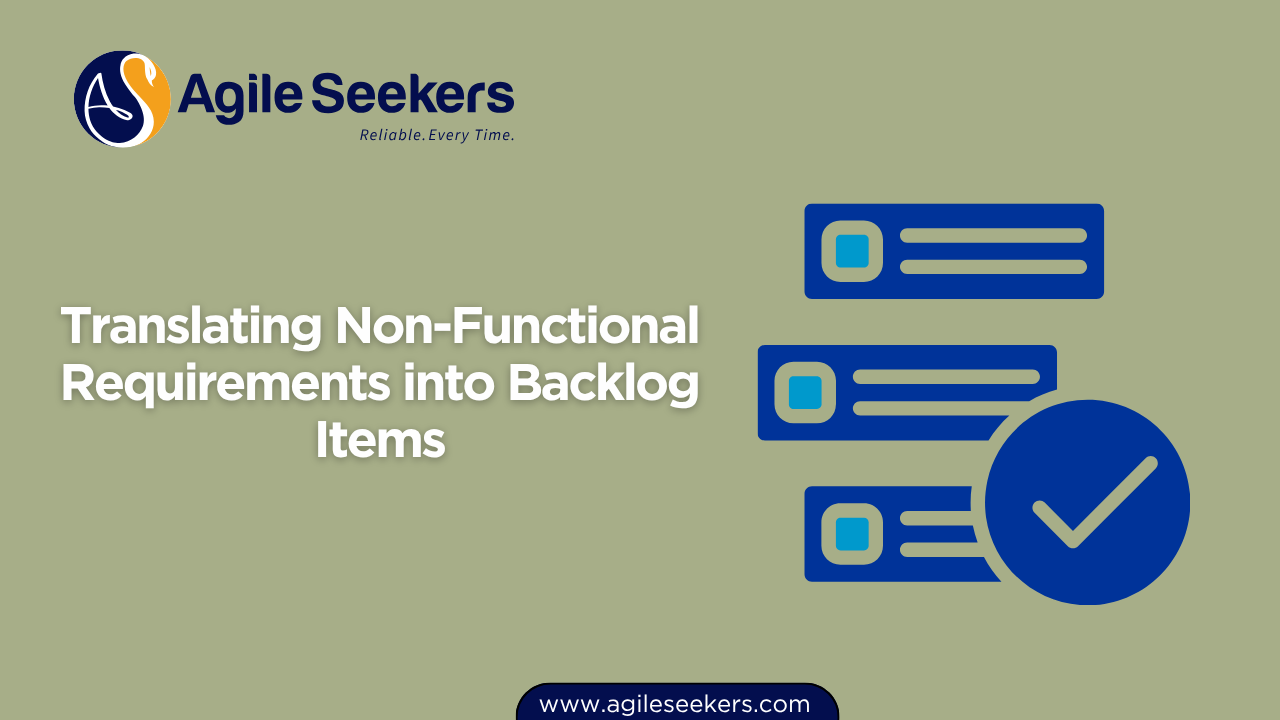Translating Non-Functional Requirements into Backlog Items

When teams focus on building new features, non-functional requirements (NFRs) like performance, scalability, availability, and security often take a backseat. Yet these qualities are vital. They influence user satisfaction, regulatory compliance, and long-term system stability. To ensure these expectations aren’t missed, product owners and project managers must translate NFRs into actionable backlog items.
This article breaks down how to do that effectively—without letting these essential elements drift into ambiguity or slip through sprint planning unnoticed.
What Are Non-Functional Requirements?
Non-functional requirements define *how* a system should behave, rather than *what* it should do. Unlike functional requirements, which describe specific features or behaviors, NFRs set quality benchmarks or system constraints.
Examples include:
- System should load within 3 seconds under a load of 1,000 users.
- Uptime must remain at 99.95% monthly.
- Data must be encrypted both at rest and in transit.
- Support for 3,000 concurrent sessions.
These requirements support the system’s operational excellence but don’t fit neatly into a feature user story. That’s why they need special treatment in the product backlog.
Why NFRs Need Backlog Representation
Non-functional requirements impact technical architecture, development effort, testing, and overall system quality. If they’re not visible in the backlog, they’re rarely prioritized or tested effectively. Embedding NFRs into the backlog ensures:
- Alignment between business goals and technical constraints.
- Shared understanding among developers, testers, and stakeholders.
- Continuous verification and monitoring through acceptance criteria or test automation.
Product Owners trained through frameworks like SAFe POPM training learn to integrate such technical concerns without derailing value delivery. Doing this well distinguishes a tactical PO from a strategic partner.
Common Categories of NFRs to Translate
Before you convert NFRs into backlog items, start by categorizing them. This helps your team identify which NFRs need continuous monitoring and which require single efforts.
| Category | Description | Examples |
|---|---|---|
| Performance | How fast the system responds | Page load time under 2 seconds |
| Scalability | System's ability to handle growth | Support 10K concurrent users |
| Security | Protecting data and access | Implement OAuth 2.0, encrypt all traffic |
| Availability | System uptime and failure handling | 99.9% uptime SLA |
| Maintainability | Ease of modifying or updating system | Log every error with stack trace and timestamp |
Translating NFRs into Backlog Items
Once NFRs are clear and categorized, the next step is to convert them into backlog items. You have several formats to do this, depending on the type of requirement.
Option 1: Create Standalone NFR User Stories
These stories should have measurable acceptance criteria and value justification.
As a system architect,
I want all traffic to be encrypted using TLS 1.3,
So that user data remains secure in transit.
Acceptance Criteria:
- All HTTP requests redirected to HTTPS
- Only TLS 1.3 supported
- Verified through automated penetration testing
Option 2: Embed NFRs as Part of Functional Stories
In some cases, NFRs complement features. For example, while building an upload feature, you can embed a performance requirement as acceptance criteria.
Given a 5MB image file,
When a user uploads it,
Then the upload should complete within 3 seconds on a 3G network.
This ensures the team doesn’t miss the performance expectation while implementing the functionality.
Option 3: Use Enabler Stories or Technical Tasks
When following SAFe or similar scaled agile approaches, SAFe Product Owner/Manager Certification encourages the use of enabler stories. These support the system architecture or infrastructure necessary to fulfill NFRs.
Example:
Enabler Story: Integrate APM tool to monitor app response times
Acceptance Criteria:
- New Relic configured on staging and production
- Response time threshold alerts set for key transactions
Prioritizing NFRs Without Sacrificing Feature Delivery
NFRs often get sidelined because they don’t appear as urgent. Use these techniques to maintain focus without compromising on business features:
- Make NFRs visible in sprint planning.
- Link technical stories to business value where applicable.
- Use Definition of Done to standardize recurring NFRs like logging, monitoring, and security practices.
- Balance your sprint capacity between features and technical debt reduction.
Project Managers with a PMP Certification understand that technical constraints often shape the critical path. They collaborate with architects and product owners to phase NFRs appropriately into milestones.
Tracking and Validating NFRs
Once NFRs become backlog items, they must be testable and traceable. A few best practices:
- Automate performance and security tests using tools like JMeter, OWASP ZAP, and APM tools.
- Log and monitor compliance in CI/CD pipelines.
- Include NFR metrics in dashboards for stakeholder visibility.
- Use test coverage metrics to show evidence of non-functional test validation.
These practices align with DevOps and continuous delivery principles. Many organizations also integrate them with incident postmortem documentation to validate that NFRs hold up under stress.
Common Pitfalls to Avoid
- Ambiguous NFRs: Avoid vague requirements like “system should be fast.” Be specific and measurable.
- Delayed Implementation: Waiting until late stages to address NFRs results in expensive rework.
- Neglecting Monitoring: NFRs aren’t “done” after release. They require continuous measurement.
- Too Many at Once: Focus on the most critical NFRs per increment. Don’t overload sprints with low-priority technical tasks.
Conclusion
Non-functional requirements shape the long-term quality and reliability of a system. When teams take time to translate them into structured, testable backlog items, they prevent downstream issues and maintain stakeholder trust. Whether through standalone stories, embedded criteria, or enabler epics, NFRs deserve a place in the backlog, not on a dusty Confluence page.
Product Owners trained under frameworks like the SAFe POPM Certification and Project Managers with PMP certification training can drive these conversations effectively, ensuring that non-functional goals are treated with the same seriousness as business features.
It’s not about choosing between function and quality—it’s about integrating both into your delivery process from day one.
Also read - Mapping Infrastructure Requirements into Product Roadmaps
Also see - Defining Monitoring and Alerting Standards with Development Teams




















